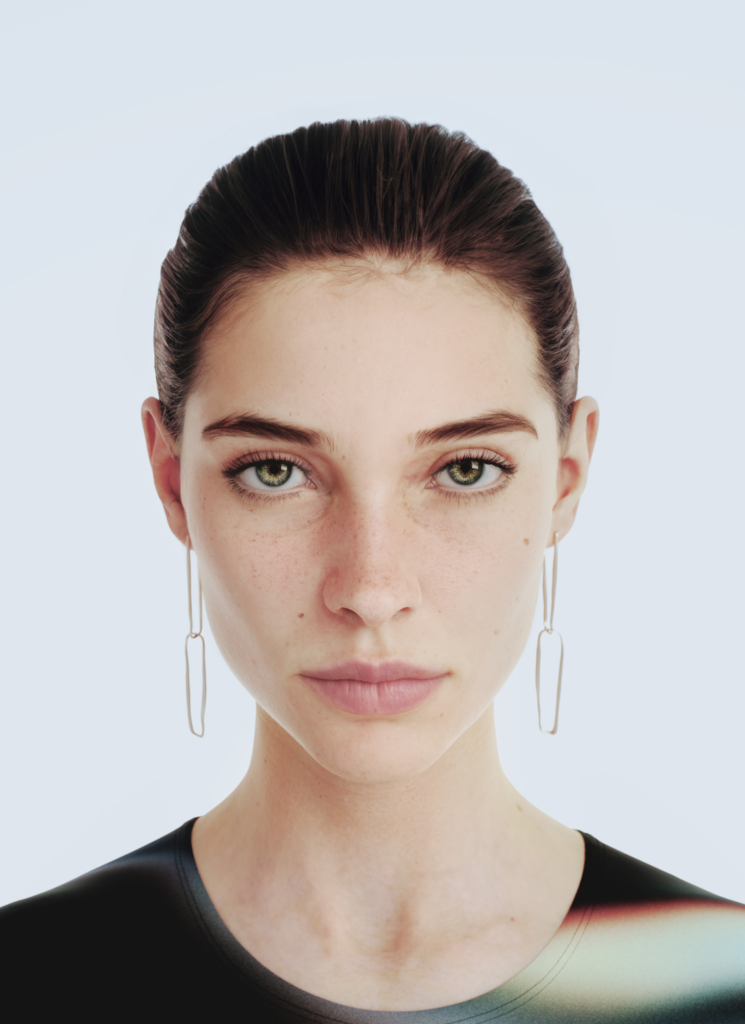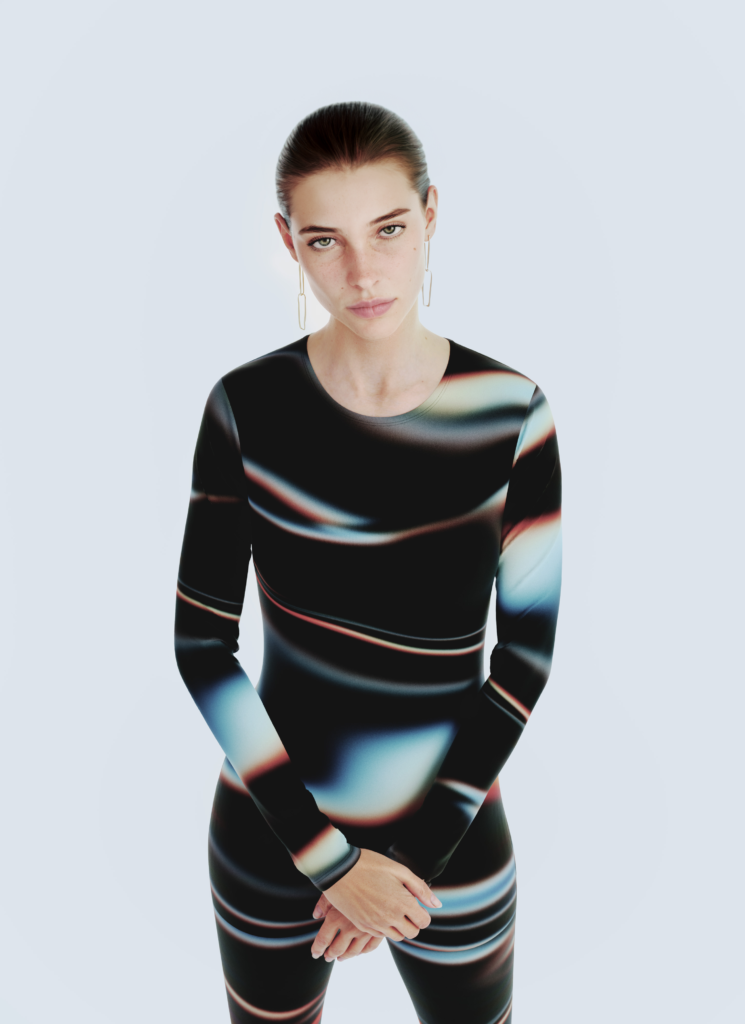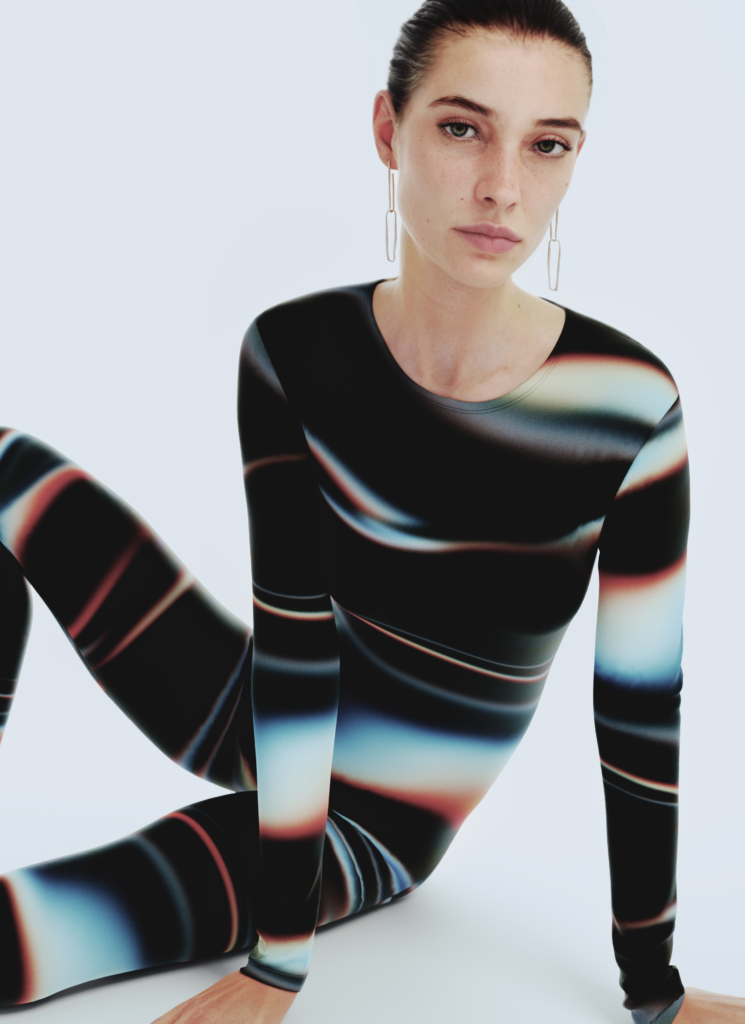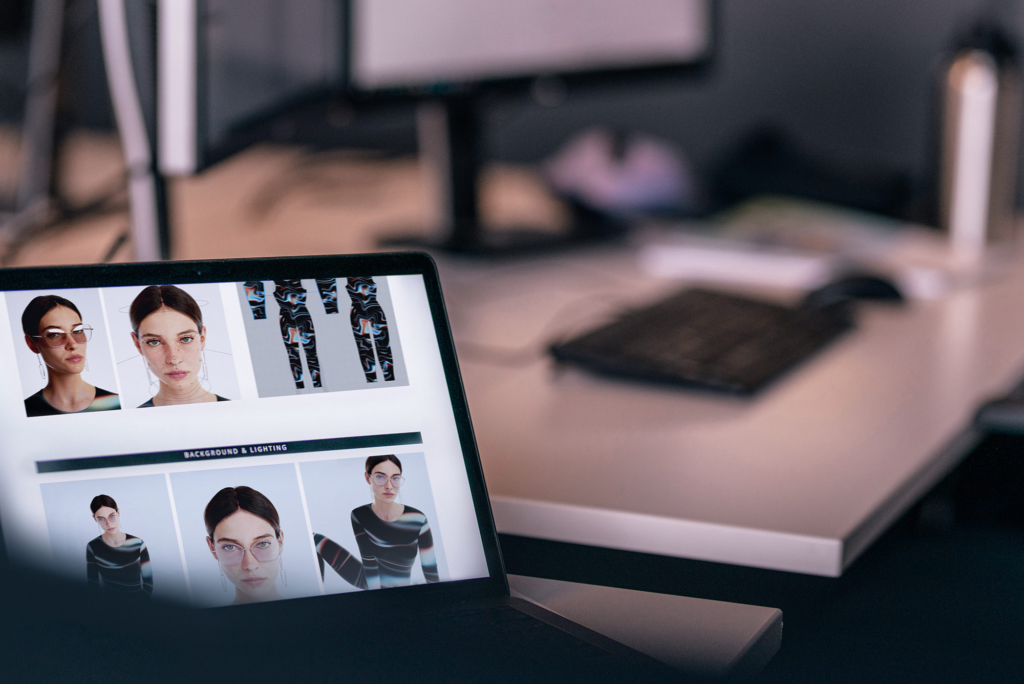

Can you elaborate on the concept of virtuality becoming a part of our identity in the future, and how Ava embodies this idea?
In the future, physical and digital experiences and identities
will seamlessly blend through technologies. New synergies and spaces will be formed. Think of it as another layer that will be incorporated into our day-to-day life, just like the invention
of the telephone. At first, foreign and just available to a few, it became the new normal for every household and provided a new realm of communication. Yet, virtuality will be much more than just simple communication. It will cover aspects like creation, exploration, control, communication, etc. Possibilities will be endless. And so are possible threats. Therefore, we must thread with courage but also caution. Ava embodies this idea of a new frontier that shall be explored with an open mind and a strong ethical backbone. People feared one wouldn’t meet in person when the telephone became en vogue. With virtuality, the stakes lie much higher. But so do the possibilities to shape our future for the better.
Could you explain how Verce integrates fashion, gaming, art, CGI production, and AI into an interdisciplinary entity?
Different skills must be represented in a team to create exciting and innovative things. Our team, therefore, consists of classic product developers from the fashion industry, who had nothing to do with 3D six years ago, and 3D artists from the gaming and film industry, some of whom have a background in art and many years of experience in the field. For example, a former sculptor now creates virtual humans. Everyone must have a certain openness to constantly familiarize themselves with new topics, which is more important than ever, given the rapid development of AI. This is precisely why we recently recruited colleagues from this area – it sometimes leads to funny conversations. When fashion people try to explain to people outside the industry what a seam allowance is.

What technologies and core capabilities does Verce leverage in creating virtual models and assets?
Every one of our virtual models is unique since they are not based on the image of an existing person. They are created from sketch and do not rely on 3D scans. Yet, we use conventional 3D techniques to model their body, texture their skin, shape their hairstyles, etc. The ability and knowledge of the human anatomy is essential here. And, of course, our virtual models and assets also reflect our aesthetic understanding and perception. In the future, we want to include AI in our creation process. The challenge here will be to ensure realism and consistency in replication.
How does Verce contribute to the development of digital fashion, and what role do virtual models play in this context?
During the pandemic, many clothing manufacturers suddenly faced new challenges because some fabrics or prototypes from abroad were no longer available, and they had to focus more on the internal development of virtual prototypes. Another point that stands out is that the trend for purely virtual clothing and accessories has gained momentum in the last couple of years. Yet, the human being is absent in many representations of virtual fashion and 3D simulations. But isn’t clothing made for people? No matter if it is in the non-digital or digital world. And therefore, the humans who wear them should be presen- ted accordingly, not in an abstract artistic way or even comple- tely hidden, but in a realistic, relatable way.
The verce team has managed to fill all these gaps. We answer development and marketing needs with an excellent 3D body for fitting and hyper-realistic virtual models. They have a soul and are visually indistinguishable from real people. We bring realness into the virtual world. Hence, our vision is “We make digital evolution human.”
Can you elaborate on the process of creating lifelike virtual models and assets tailored for fashion at Verce, and how it differs from traditional fashion modeling? (With the use of technologies like 3D, real-time capabilities, and AI, how do these advancements contribute to the creation of virtual fashion models, and what benefits do they offer over traditional methods?)
Clothing is increasingly being marketed and sold online. The presentation of virtual clothing creates opportunities to change production processes, among other things. For example, fashion would not have to be completely pre-produced. There are technologies in which the customer has their own avatar and can try on the clothes with it.
The different technologies have their advantages and uses. Real-time enables faster animations and interaction, just as it
is necessary for metaverse applications. AI is still in its infancy but enables more flexible and faster content creation if the consistency is there. Free content without defined specifications, such as the model or clothing, can be created in minutes. 3D is a proven and integrated process for CGI content. And compared to traditional methods, resources can be conserved.
With the integration of digital fashion and virtual models, how do you foresee it impacting the traditional fashion industry? (In what ways can the use of virtual models change the dynamics of fashion design, production, and marketing?)
One development we can already see today is that fashion is being expanded through digital fashion. Purely digital clothing and accessories are being sold. We also see the merging of digital and physical styles. Digital and physical fashion have yet to hit the mass market, but they surely will in the future. Furthermore, integrating digital fashion will change some processes along the creation and supply chain. For example, in the future, tasks will overlap during the creation process: design, cutting, and fitting will go hand in hand when you develop the prototype digitally. For marketing, the same style doesn’t have to be photographed repeatedly for internal meetings, sales, and the online store; instead, one can use a simulation for all purposes.
Finally, digitalization can mean a more sustainable approach to creating fashion. Just think about resources that can be saved by not producing prototypes since you have an accurate digital version of them, which suffices.

What market trends do you observe in the adoption of digital fashion and virtual models, and how do these
trends shape the future direction of the industry?
Fashion will no longer be bound to the analog realm. It will be given an additional layer, a virtual one that will be even more accessible and realistic in future. The possibilities are almost endless, with design being much more extravagant and unique in the digital world than in the analog world. Therefore, we are certain that virtual models and fashion will become a vital component. Virtual try-ons, digital fashion ownership, tech integration in fashion, virtual fashion influencers – one day, all these things will be our new every day.
How might the development of virtual fashion and models align with or disrupt current fashion industry norms?
It is imperative to recognize that digitalization and change only sometimes mean the old is replaced by the new. Sometimes, it extends the old and can create new opportunities. We are often confronted with the statement: “You’re taking jobs away from models” – that would probably be a bit too simple. We also lay the ground stone for real models to create a digital twin of themselves. This allows them to work while being on vacation or ill. It also allows them to take several jobs simultaneously – in different places and even age groups. However, we must ensure hurtful biases are not replicated, ethical standards are upheld, and fairness in the digital world stands its ground.
Given the advancements in virtual models, do you foresee changes in the way fashion shows are conducted, and how might virtual models influence the retail experience?
Virtual fashion shows will become increasingly lifelike, thanks to realistic virtual humans and evolving technologies that enhance the viewing experience. Although the current emphasis is on 3D efforts, the integration of AI and emerging gadgets is expected to bring about significant changes in the future.
Regarding the retail experience, digitalization will broaden the scope of customer experiences by seamlessly blending the real and virtual worlds. And that will go far beyond seeing virtual models in stores.
What is the purpose of creating Ava as a virtual personality, and how does it go beyond being just a business case?
What purpose can a virtual personality have or acquire? Factua- lly, none. Or can it? Just as in real life, it depends on the attitude, the right mindset, and the vision. We want to leverage Ava’s narrative with strategic partners to make the digital transformation and the possibilities and opportunities of virtual parallel
worlds accessible to the middle target audience (Generation X to Z). We want Ava to break boundaries, build bridges, alleviate fears, and accompany and shape change. Ava is more than digital mainstream. She is unique because she embodies the human, the messy aspect of virtuality, and in doing so, is ahead of her time.

How does Ava humanize virtuality, making it more relatable to people in their everyday lives?
Ava’s development was driven by one goal: to create a genuine and relatable character with a palpable soul. And what way to relate is better than to start with a mistake, an error? Eventually, to error is to be human. That’s why our story writers came up with this fantastic background story. If you want to go biblical, you might say that the apple of Ava’s story was a glitch, an irregularity in the digital system. This resulted in Ava not only leaving the digital realm and entering the non-digital realm but also gaining the conciseness of being human and virtual simultaneously. In simpler terms, she is a program of an AI manifested in human form. And with this human form comes the messiness and hardship and the joy and specialness of being human. And precisely, this imperfectness makes her more relatable to people in their everyday lives.
How does Ava, as a digital personality and model, contribute to the narrative and promotion of digital fashion?
From early on, we wanted to ensure Ava had, in fact, not a picture-perfect career. That’s why our writers concentrate first on her finding a career path that satisfies her and her parents. Later, we included the scenario of Ava getting discovered by a model scout. Today, her model job allows us to simultaneously promote the future and the possibilities of digital fashion. On her Instagram account, you can see how incredible the digital fashion world has already become.
Ava is described as a living coexistence of a digital and non-digital world. How does this concept
play out in her character and narrative?
Our writers focused on creating a protagonist who is not this flawless hero from the start but has several awakenings in her life – shaping her into the being she is today. Considering that her digital existence will outlive her human existence in the future, they decided quickly to focus on the human aspect at the beginning of her life. That is why Ava only realized she was different when she became a teenager. But also, later in her story, our writer didn’t opt for the shortcut by making her this great digital hero but decided to go a different route. “We wanted to keep it as real as possible. And one of these realities might likely be that a creation like Ava would have been looked away and tested on as soon as she was discovered.”To answer the question further goes beyond the scope of this interview. That’s why we recommend checking out Ava’s blog, which features her origin story and gives significant insights into her character.
